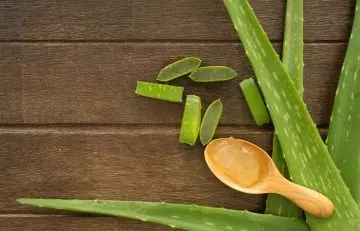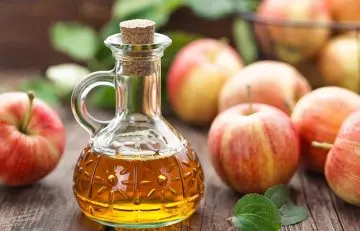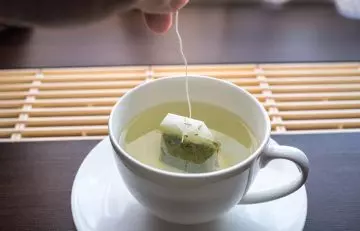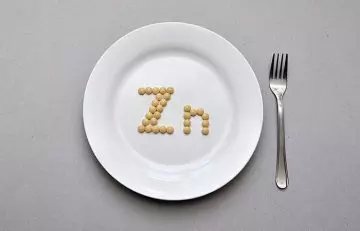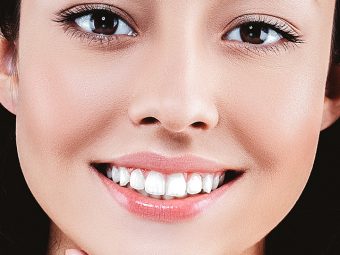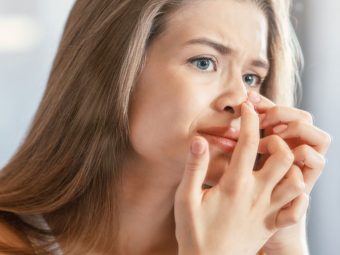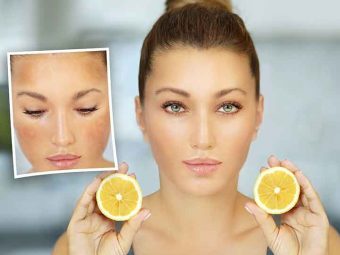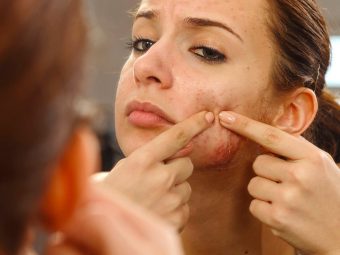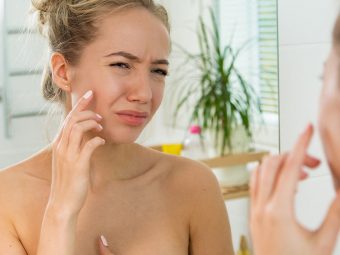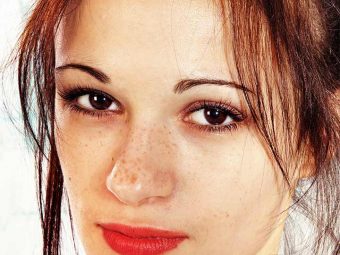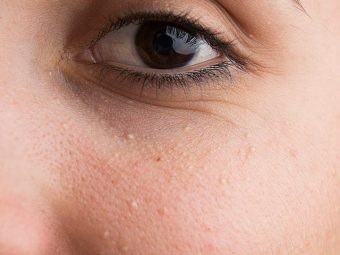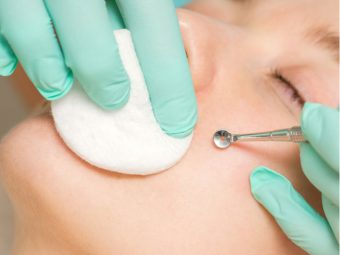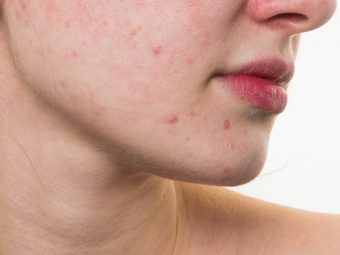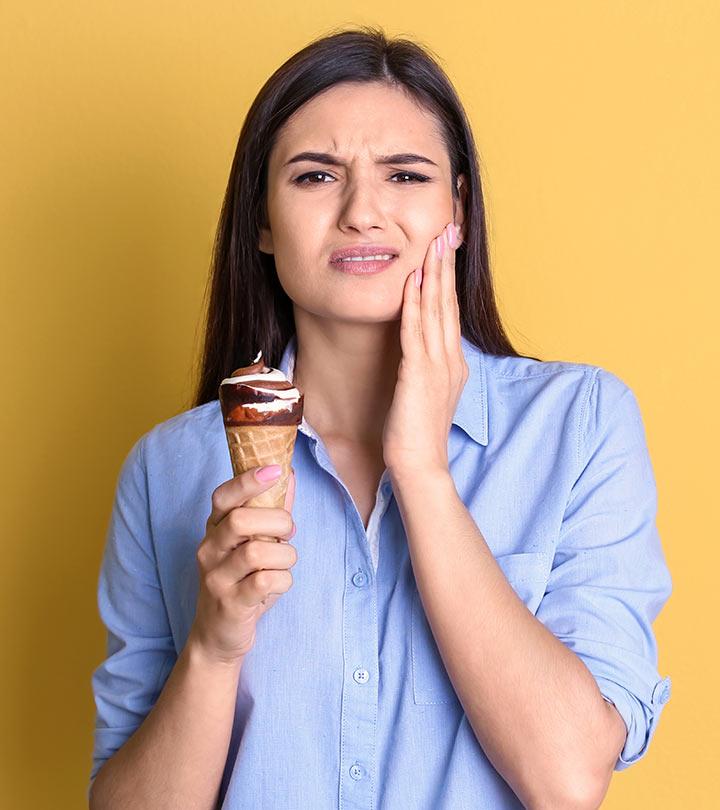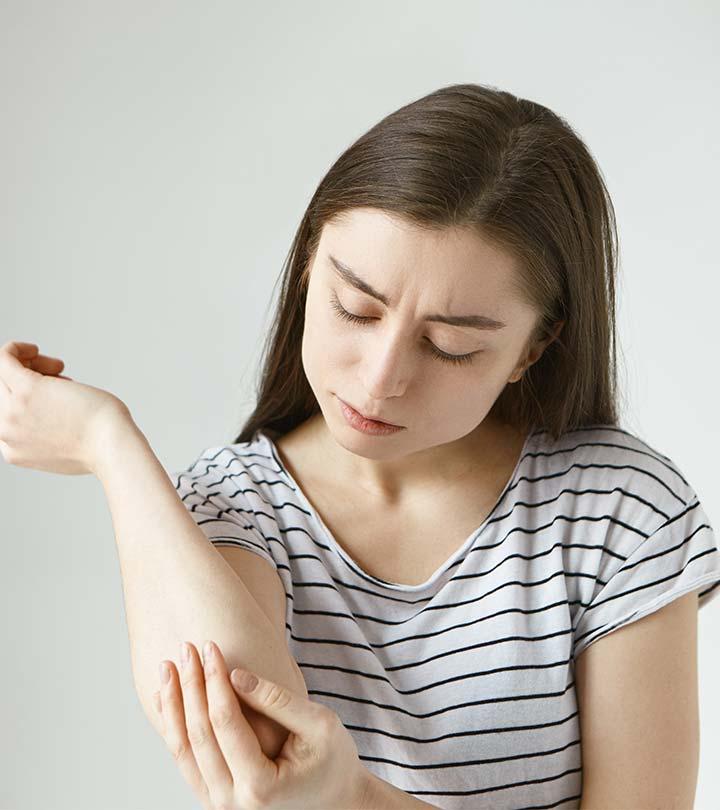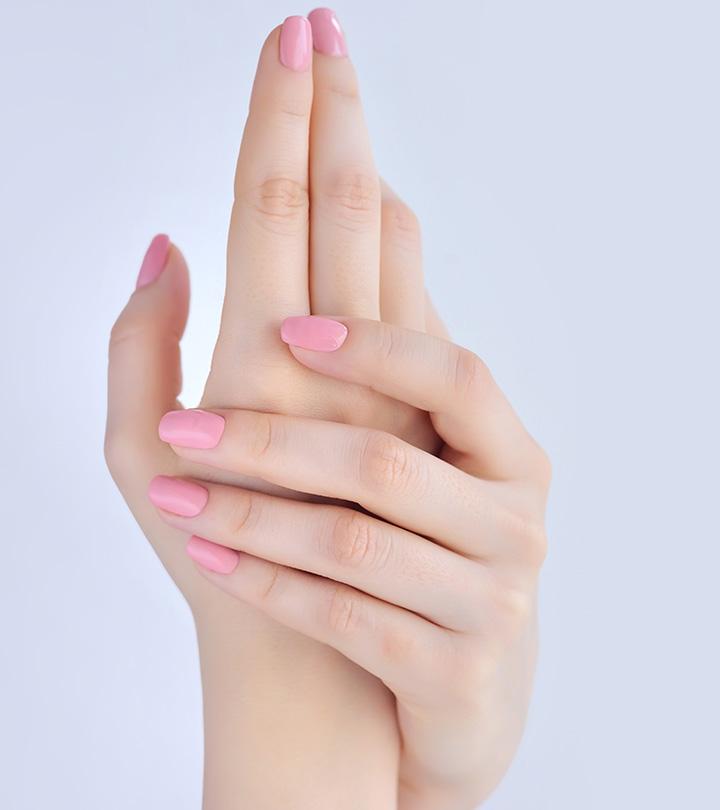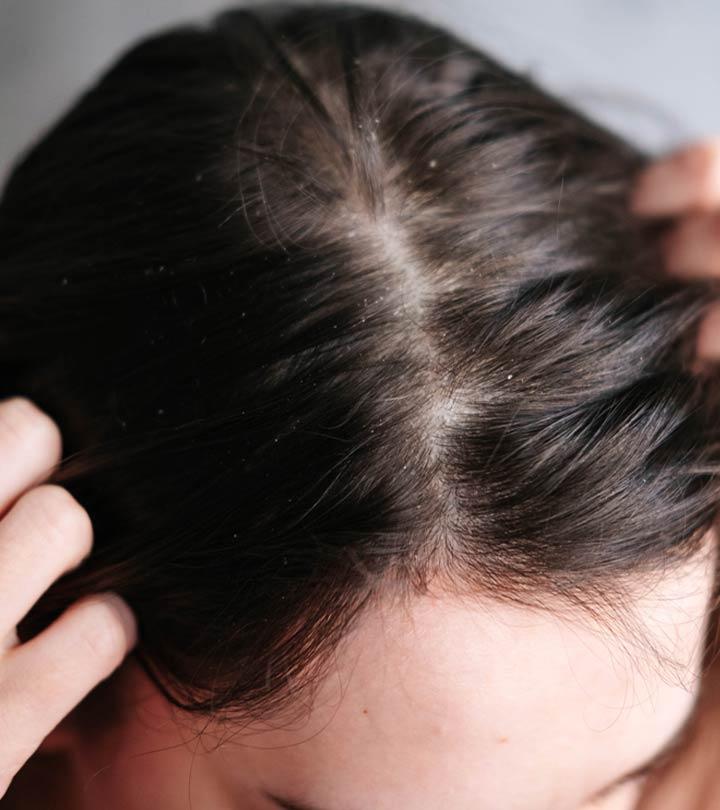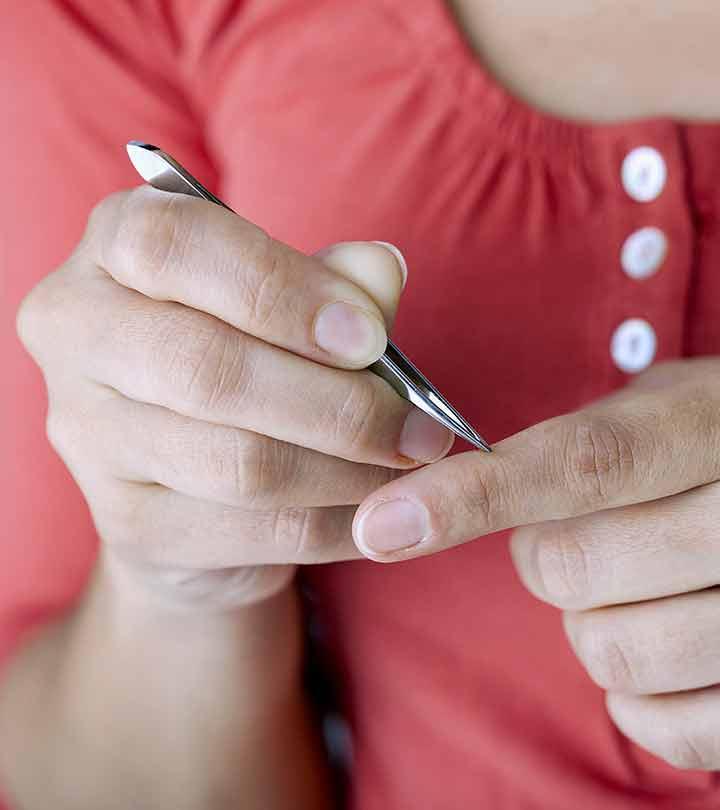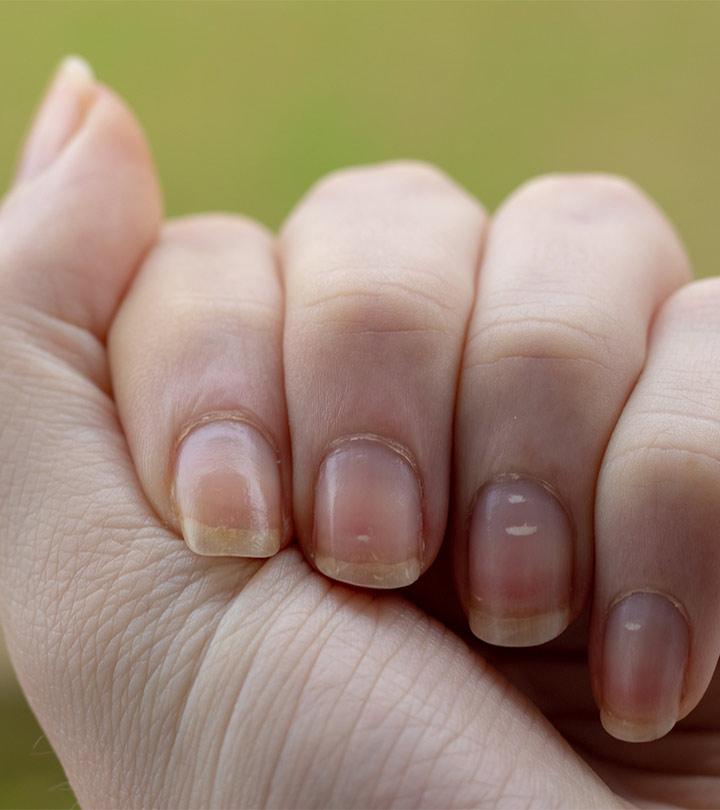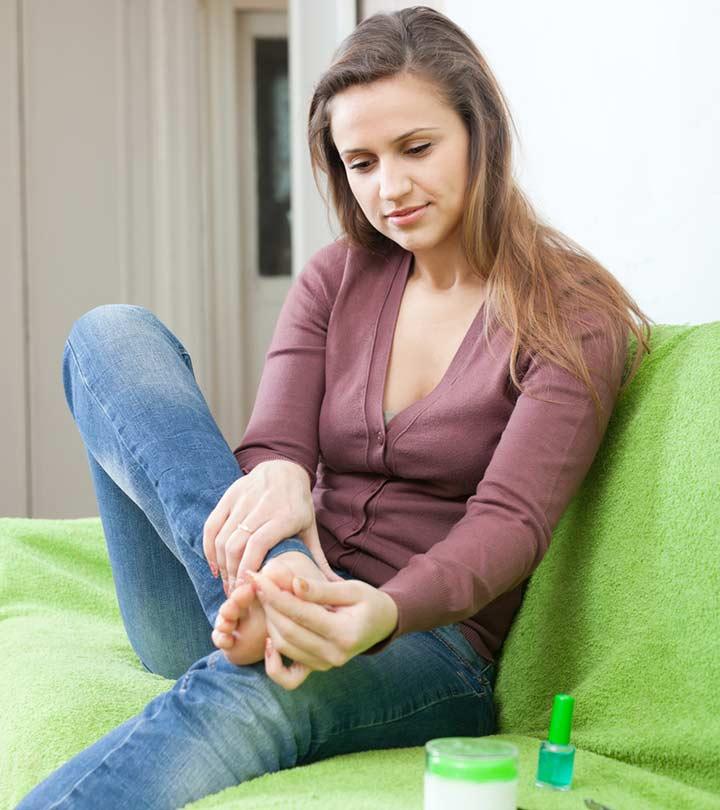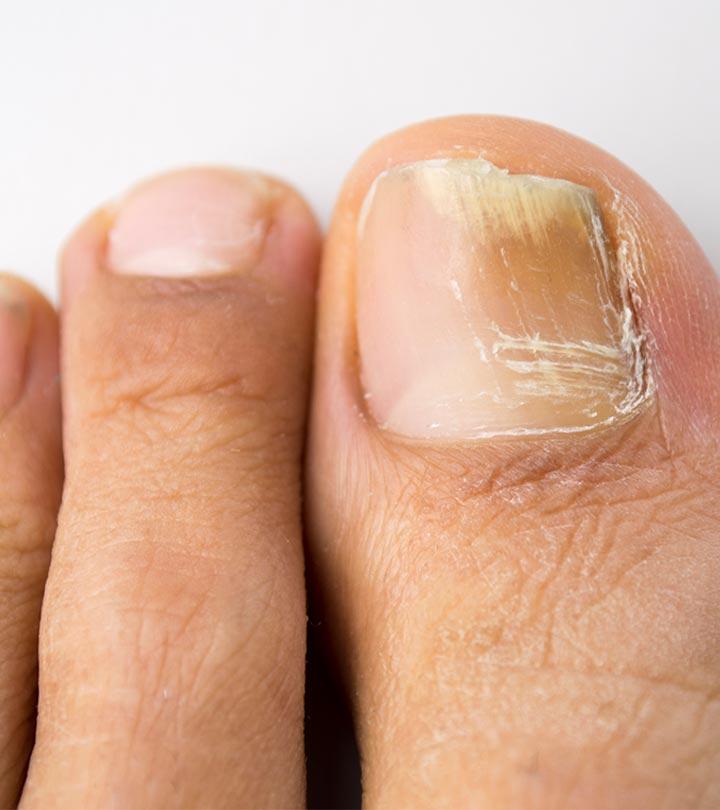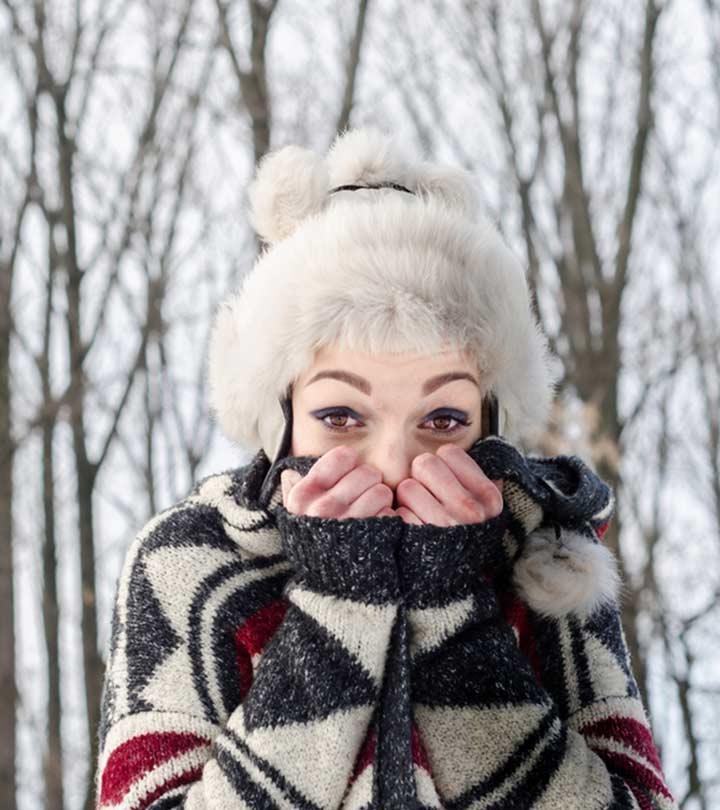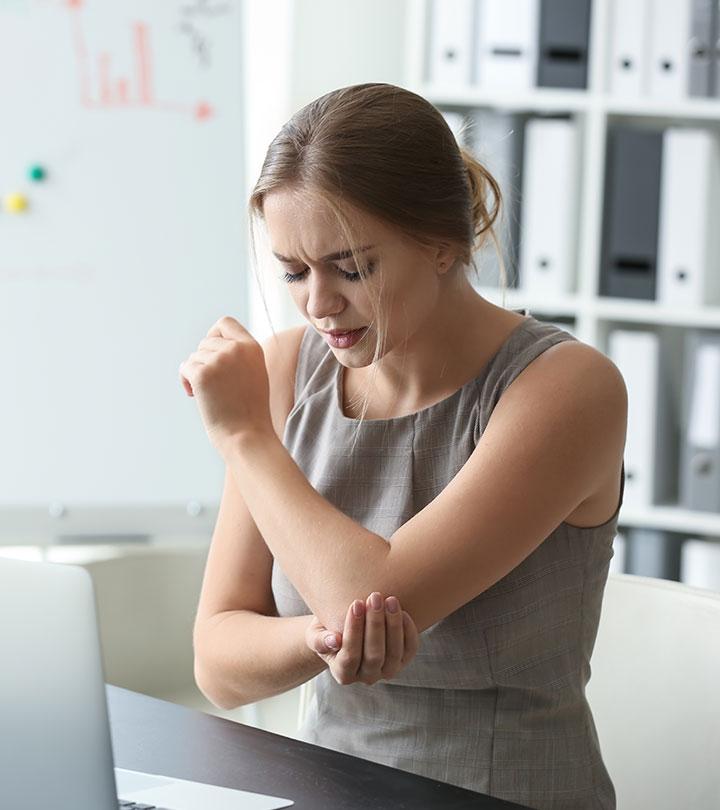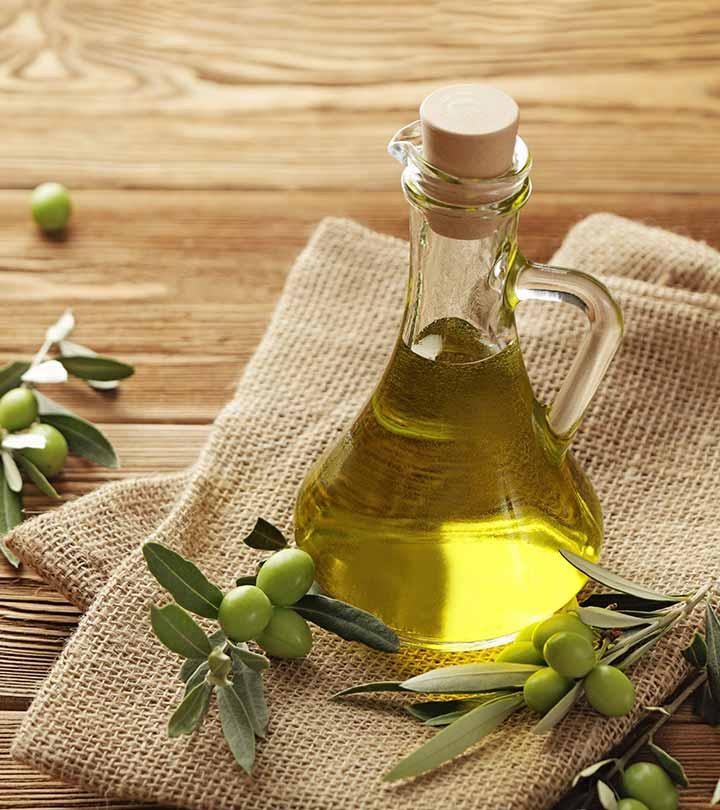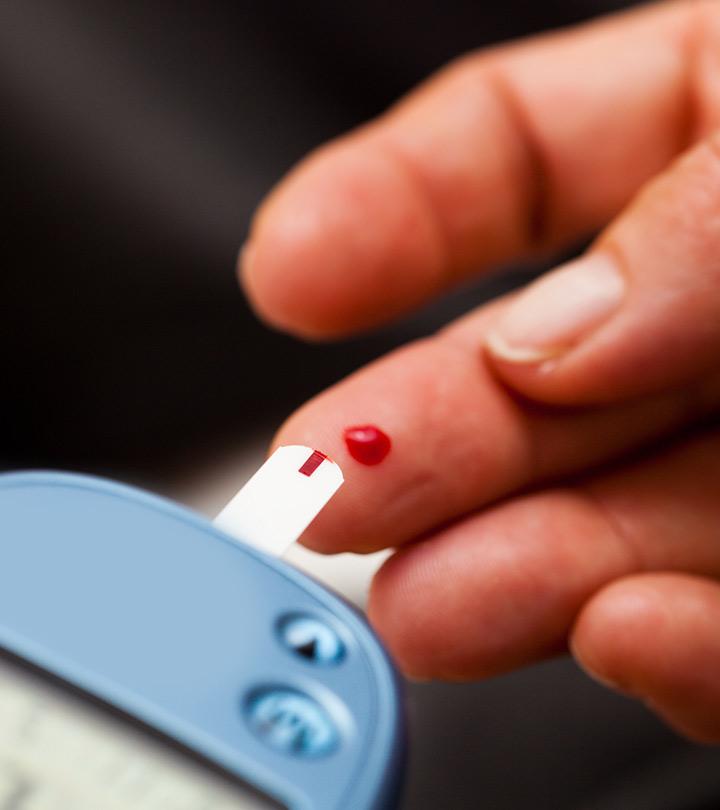How To Get Rid Of Forehead Acne – 9 Home Remedies To Try
All it takes is a few measures to combat breakouts and make your skin naturally smooth.
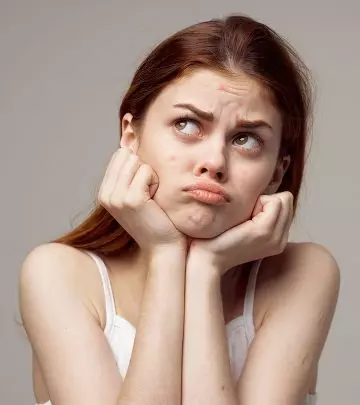
Image: Shutterstock
Forehead acne has to be one of the most stubborn and hard-to-conceal skin conditions out there. The spotted, rashy red bumps can either flare largely or remain as swollen bumps that can be a damper on your whole look. Even though they are common during puberty, they may also last into adulthood for some. The reasons for forehead acne may be hormonal, environmental, or even stress-related. This article helps you find remedies to get rid of your glaring forehead acne once and for all. Keep scrolling for all information!
In This Article
What is Forehead Acne?
Acne on your forehead is identical to acne on any other part of your body. It begins to form when tiny glands beneath the skin’s surface become blocked. This may happen as a result of oils, debris, and dirt clogging your pores. Overactive sebaceous glands are the reason acne can develop on the forehead. These glands create a substance known as sebum, which can trap germs or dead skin cells in the pores. As a result, inflammation can increase over time, making zits, blackheads, and whiteheads appear on the skin. This is more common on oily skin but it can appear on other skin types with an oily T-zone.
If you are wondering how to get rid of bumps on your forehead, you need to learn how they might pop up in the first place. There are many factors that can make you prone to forehead acne. Learn more about them in the next section.
What Causes Forehead Acne?
Some factors that increase your risk of developing acne include:
1. Hormonal Changes
Hormonal changes around puberty can cause the appearance of acne and pimples due to the changing levels of hormones in your body (1).
2. Stress
Many people have an incorrect understanding of the connection between stress and acne. Acne cannot be caused by stress directly. But, in some studies, stress has been found to aggravate acne (2).
3. Poor Hygiene
If you do not maintain good hygiene by washing your face and hair regularly, you are at the risk of getting acne on the forehead as the impurities in your skin can clog the pores and cause breakouts. These breakouts can also turn into undesirable acne scars if you are not careful.
4. Use Of Comedogenic Products
If you use comedogenic cosmetic and skin care products, the pores in your skin can get clogged and result in breakouts and acne. Comedogenic products contain oils that can block your pores and cause pimples (1).
5. Medications Like Steroids
Acne can also be a result of taking medicines that can cause a hormonal imbalance in your body. These medications include lithium, steroids, and anticonvulsantsi XA diverse group of agents that help prevent seizures by normalizing how nerve impulses travel through nerve cells. (1).
6. Skin Irritation
Applying makeup on the forehead or wearing accessories like hats and headgears can irritate the skin and cause acne. Frequent forehead touching can also irritate skin and cause acne.
If you are still wondering if there are any other factors that can cause the condition and how to get rid of forehead acne, check out the next section.
What Other Conditions Cause Forehead Breakouts?
There are many other factors that can directly or indirectly cause breakouts on your forehead. These include (1):
- Infected hair follicles
- Fungal infection
- High glycemic diet
- Hair products
- Allergic reactions
- Skin conditions like rosaceai XA chronic inflammatory skin condition that causes red and small pus-filled bumps on the skin, especially on the face. and folliculitis
These are some common causes of forehead acne, but this condition is not limited to a type. We discuss a few types of forehead acne below.
Types Of Forehead Acne
Several types of acne can develop on your forehead. Here are some common types:
- Inflammatory Acne: It occurs when bacteria infect clogged pores and cause red, swollen bumps. These sore bumps are painful to the touch and may contain excess oil, pus, and dead skin cells. Papules and pustules are common types of inflammatory acne.
- Comedo: A non-inflammatory form of acne that can be seen on the forehead and other parts of the face. Blackheads and whiteheads are common types of comedonal acne (3).
- Nodular And Cystic Acne: Nodules are large, painful bumps that form deep within the skin (4). On the other hand, cysts are pus-filled, painful lumps that can cause scarring (5).
If you are wondering how to get rid of pimples on the forehead overnight, let us remind you that patience is key. You might not achieve a drastic change overnight, but there are a few home remedies for tiny bumps on your face that might help you. If you have a mild case of acne, the following natural remedies may help treat it.
How To Reduce Forehead Acne Naturally
1. Aloe Vera
Aloe vera contains active components that possess antimicrobial and anti-inflammatory properties, which may help alleviate acne and pimples on the forehead (6).
You Will Need
- Aloe vera gel (as required)
What You Have To Do
- Dab a little aloe vera gel on the affected area.
- Leave it on for 20-30 minutes.
- Rinse it off.
How Often You Should Do This
You can do this 1 to 2 times daily.
Bianca Renee, a YouTuber, shared her experience of using aloe vera for a week for her face and forehead acne. She said, “I do think that my skin felt very moisturized. I think they did start to fade my scars (i).”
2. Tea Tree Oil
Tea tree oil has anti-inflammatory properties that can reduce mild to moderate forehead acne (7). Its antibacterial nature may also fight the acne-causing bacteria.
You Will Need
- 1-2 drops of tea tree oil
- 1 teaspoon of sweet almond oil or any other carrier oil
- Cotton swabs
What You Have To Do
- Add 1-2 drops of tea tree oil to a teaspoon of any carrier oil.
- Mix well and dip a cotton swab in the mixture.
- Apply the swab to the affected areas.
- Leave it on overnight.
How Often You Should Do This
You can do this once daily.
Note: Tea tree oil can cause skin irritation in some people and must be avoided if you are allergic to it.
3. Apple Cider Vinegar
Apple cider vinegar exhibits powerful antibacterial and anti-inflammatory properties (8). This may help reduce the infection that causes acne and aid healing.
You Will Need
- 1 tablespoon of raw apple cider vinegar
- 3 tablespoons of water
- Cotton balls
What You Have To Do
- Mix a tablespoon of raw apple cider vinegar with three tablespoons of water.
- Apply the mixture to a freshly cleansed face with a cotton ball.
- Leave it on overnight.
How Often You Should Do This
Do this once daily or every alternate day.
Note: Apple cider vinegar, if used undiluted, can cause burns and skin irritation.
4. Lemon Or Lime Juice
Lemon is a rich source of vitamin C. Due to its anti-inflammatory and antibacterial properties, vitamin C, whether it is topically applied or consumed, may help minimize acne (9).
You Will Need
- 1 teaspoon of lemon juice
- 2-3 teaspoons of water
- Cotton balls
What You Have To Do
- Mix a teaspoon of lemon juice with two to three teaspoons of water.
- Dip a cotton ball in the mixture and apply it all over your face.
- Wash your face after 20-30 minutes.
- You can also drink a glass of fresh lime juice daily.
How Often You Should Do This
Apply it once every alternate day.
Note: Lemon juice can cause a stinging sensation and irritation. You should avoid this if you are allergic to lime juice. Lemon juice also makes your skin photosensitive. Hence, make sure you apply sunscreen before stepping out.
5. Green Tea Extract
Green tea contains polyphenolsi XNaturally occurring micronutrients in plants that help promote hair growth because of their antioxidant and anti-inflammatory properties. that exhibit anti-inflammatory properties (10). This may help soothe the forehead pimples and reduce sebum production, which, in turn, may help in combating acne.
You Will Need
- Used green tea bags
What You Have To Do
- Take a couple of used green tea bags and refrigerate them.
- Place the cold tea bags on your forehead.
- Remove and rinse your face with water after 20-30 minutes.
How Often You Should Do This
You can do this once daily.
 Quick Tip
Quick Tip6. Honey
Honey has anti-inflammatory and antibacterial properties that can help in fighting acne (11).
You Will Need
- Raw honey (as required)
What You Have To Do
- Apply a small amount of raw honey to your forehead.
- Leave it on for 20-30 minutes and rinse it off.
How Often You Should Do This
You can do this once daily.
7. Tomato
Tomatoes are rich in vitamin C and exhibit anti-inflammatory properties (12). This may be helpful in eliminating acne on your forehead.
You Will Need
- ½ tomato
What You Have To Do
- Cut a tomato in half.
- Gently rub one half of the tomato all over your face.
- Leave it on for 15-30 minutes before rinsing it off.
How Often You Should Do This
You can do this once daily.
8. Azelaic Acid
Azelaic acid is non-comedogenic and can help cleanse your pores. It has also been found to treat comedonal and inflammatory acne (13). An ointment or cream that contains azelaic acid may help reduce the appearance of acne.
You Will Need
- Azelaic acid ointment
What You Have To Do
- Take a dollop of the prescribed ointment and apply it to the affected area.
- Let this dry before you apply other cosmetic products.
How Often You Should Do This
You can do this once daily.
Note: Avoid using any deep-cleansing astringent or facial cleanser when you are using an azelaic acid-based ointment. Do a patch test to determine if you are allergic to this formulation before trying out this remedy.
9. Zinc
Several studies have shown that zinc has anti-inflammatory properties and that it has an inhibitory effect on Propionibacterium acnes, the bacteria that causes acne (14), (15). This may prove to be helpful in reducing the appearance of acne on your forehead.
You Will Need
- Topical zinc products or zinc supplements
What You Have To Do
- Take a dollop of the prescribed cream or gel on your fingertip and apply it to the affected area. Let it dry before you apply for other cosmetic products.
- Alternatively, you could take zinc supplements after consulting your dermatologist. Oral consumption may be more effective in severe cases of acne.
How Often You Should Do This
You can do this once daily.
Note: Do a patch test before trying out this remedy. Avoid using multiple acne-treatment creams. Do not opt for this remedy if you have sensitive skin.
These were some of the best ways to get rid of tiny bumps on the face quickly and naturally at home. These remedies are natural and take time to show results. If you have severe acne, avail medical treatment after consulting a dermatologist.
Other Medical Treatments
Mild cases of pimples or acne on the forehead can be treated using over-the-counter medication in the form of ointments, creams, gels, or supplements. Benzoyl peroxide, salicylic acid, retinol, and resorcinol are common OTC options (16).
Benzoyl peroxide is known to be an antibacterial agent, while salicylic acid exhibits anti-inflammatory and comedolytic properties (16). This can help reduce the blockage of pores with sebum that can lead to acne.
Retinol (vitamin A) and zinc supplements are other effective options to reduce acne (16).
You can resort to over-the-counter acne treatment medications, depending on the severity of the acne on your forehead. Make sure to consult your dermatologist before taking these medicines. If you are dealing with severe acne, your dermatologist will guide you about the treatment options you can follow.
Now let’s take a look at the few tips to prevent the recurrence of forehead acne.
Tips To Prevent Forehead Acne
If you are looking for ways to prevent acne, the first step is to maintain excellent personal hygiene. Cleansing your face after exposure to pollution, grime, and dust can help prevent acne. Here are a few tips to prevent forehead acne:
- Wash your face with a mild cleanser twice daily.
- Use a mild facial scrub at least once a week.
- Remove all makeup before you go to bed.
- Avoid using comedogenic facial products to prevent clogging the pores in your skin.
- Avoid eating foods with a high glycemic index (such as sugar, processed flour, pasta, etc.), chocolate, dairy products, etc. You must include foods rich in omega-3 fatty acids and antioxidants in your diet to prevent acne (17).
- Avoid wearing tight hats, helmets, or clothing that can trigger forehead acne.
- Avoid being exposed to the sun for long periods.
- Shower soon after strenuous physical activities.
- Pimples on the forehead are easy to treat and prevent if you follow a good skincare routine. Availing appropriate treatment or using natural remedies can provide you relief from forehead acne.
Infographic: When Should You See A Dermatologist For Forehead Acne?
Dermatology has advanced in today’s time and there is a solution for most skin problems. However, deciding when to visit a dermatologist for skin care advice can be tricky. For example, a common misconception is that your acne must be severe to consult a dermatologist, but this is untrue. If you’re still unsure when to consult a dermatologist for the breakouts on your forehead, check out the infographic below. We have explained when to speak with a board-certified dermatologist for your skin issue. A dermatologist can assist in identifying the underlying issue and prescribing appropriate treatment.

Illustration: StyleCraze Design Team
 Quick Tip
Quick TipPores that get clogged due to excessive sebum production and the buildup of dead skin cells, dirt, and bacteria can lead to forehead acne. In addition, hormonal changes, poor hygiene habits, stress, comedogenic cosmetics, and certain medications may trigger such breakouts. To get rid of forehead acne, you can use OTC treatment options like benzoyl peroxide, retinol, salicylic acid, and resorcinol. However, you may want to treat them using natural or home remedies. In that case, you can choose from different effective options using aloe vera, tea tree oil, lemon juice, green tea, apple cider vinegar, and tomatoes as key ingredients.
Frequently Asked Questions
How long does it take to get rid of a forehead pimple?
Acne usually takes 4-5 days to appear and another 4-5 days to go away completely. Larger lesions could take about a week to disappear. However, availing treatment can help in speeding up the healing.
Is it safe to pop a pimple on your forehead?
You should never pop a pimple on your own. Popping pimples not only increases your risk of developing more pimples in the affected area, but it also puts you at a high risk of blemishes and scarring.
How can I stop hormonal acne?
Hormonal acne can be treated with oral contraceptives and anti-androgen drugsi XDrugs that block or prevent the effect of testosterone by binding to proteins called androgen receptors. . Mild cases of hormonal acne can be treated with topical retinoids.
Does ice help forehead acne?
Using ice cubes can significantly reduce the pain caused by inflamed acne. Ice soothes inflammation by constricting the blood vessels when applied to acne or pimples (18). This provides immediate relief. Additionally, using ice packs helps to tighten skin pores so that bacteria and other contaminants cannot enter and clog them.
What foods cause forehead acne?
Research suggests that foods rich in sugar and dairy products can cause acne (and forehead acne) (19).
What are the bumps on my forehead that aren’t pimples?
Sometimes, forehead acne can look like tiny bumps instead of cysts. However, the bumps can also be milia, rosacea, contact dermatitis, folliculitisi XA common skin condition where the hair follicles get inflamed or infected and cause itching, pain, hair loss, and pimples. , or ringworm. You should visit the dermatologist for the right treatment option.
Key Takeaways
- Hormonal changes can often trigger forehead acne.
- A stressful lifestyle, poor skin hygiene, or the use of steroid medicines can also leave you with acne on the forehead.
- You can treat acne with a few drops of diluted tea tree oil.
- Other natural remedies, such as aloe vera, green tea extract and honey are also known to be helpful in treating acne.
Embark on a journey to banish those stubborn forehead pimples as expert dermatologist reveals their causes and shares effective remedies. Watch the video below and reclaim your clear and confident skin today!
Personal Experience: Source
StyleCraze's articles are interwoven with authentic personal narratives that provide depth and resonance to our content. Below are the sources of the personal accounts referenced in this article.
i. 1 week aloe vera challenge! real results! Will it clear acne and fade scars?? | BiancaReneeTodayhttps://www.youtube.com/watch?v=eljaqgoK6hc
References
Articles on StyleCraze are backed by verified information from peer-reviewed and academic research papers, reputed organizations, research institutions, and medical associations to ensure accuracy and relevance. Read our editorial policy to learn more.
- Acne Vulgaris
https://www.ncbi.nlm.nih.gov/books/NBK459173/ - The Response of Skin Disease to Stress Changes in the Severity of Acne Vulgaris as Affected by Examination Stress
https://jamanetwork.com/journals/jamadermatology/fullarticle/479409 - Comedone formation: etiology, clinical presentation, and treatment
https://pubmed.ncbi.nlm.nih.gov/15556720/ - Severe Nodulocystic Acne not Responding to Isotretinoin Therapy Successfully Treated with Oral Dapsone
https://www.ncbi.nlm.nih.gov/pmc/articles/PMC6131924/ - Acne vulgaris
https://www.ncbi.nlm.nih.gov/pmc/articles/PMC2907987/ - ALOE VERA: A SHORT REVIEW
https://www.ncbi.nlm.nih.gov/pmc/articles/PMC2763764/ - Tea tree oil gel for mild to moderate acne; a 12 week uncontrolled open-label phase II pilot study
https://pubmed.ncbi.nlm.nih.gov/27000386/ - Antimicrobial activity of apple cider vinegar against Escherichia coli Staphylococcus aureus and Candida albicans; downregulating cytokine and microbial protein expression
https://www.ncbi.nlm.nih.gov/pmc/articles/PMC5788933/ - Vitamin C in dermatology
https://www.ncbi.nlm.nih.gov/pmc/articles/PMC3673383/ - Green Tea and Other Tea Polyphenols: Effects on Sebum Production and Acne Vulgaris
https://www.ncbi.nlm.nih.gov/pmc/articles/PMC5384166/ - Honey: A Therapeutic Agent for Disorders of the Skin
https://www.ncbi.nlm.nih.gov/pmc/articles/PMC5661189/ - Tomato-A Natural Medicine and Its Health Benefits
https://www.phytojournal.com/archives/2012/vol1issue1/PartA/3.pdf - Azelaic acid. A review of its pharmacological properties and therapeutic efficacy in acne and hyperpigmentary skin disorders
https://pubmed.ncbi.nlm.nih.gov/1712709/ - Zinc Therapy in Dermatology: A Review
https://www.ncbi.nlm.nih.gov/pmc/articles/PMC4120804/ - Over-the-counter Acne Treatments
https://www.ncbi.nlm.nih.gov/pmc/articles/PMC3366450/ - Effective over-the-counter acne treatments
https://pubmed.ncbi.nlm.nih.gov/18786494/ - Significance of diet in treated and untreated acne vulgaris
https://www.ncbi.nlm.nih.gov/pmc/articles/PMC4884775/ - Effect of cold on the blood vessel wall
https://pubmed.ncbi.nlm.nih.gov/6131011/ - Significance of diet in treated and untreated acne vulgaris. Postepy Dermatol Alergol. Kucharska A, Szmurło A, Sińska B.
https://www.ncbi.nlm.nih.gov/pmc/articles/PMC4884775/





